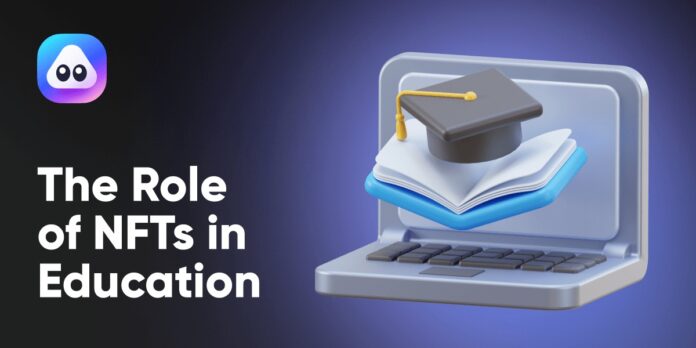The world of education has seen significant changes over the past few years, with the rise of online learning and the increasing demand for new and innovative methods of teaching. In this digital age, many educators are looking for ways to monetize their expertise and reach a broader audience, and non-fungible tokens (NFTs) have emerged as a promising solution. NFTs are unique digital assets that are verified on a blockchain, making them tamper-proof and transparent. This technology has enormous potential in the education industry, allowing educators to monetize their content and provide students with a new level of ownership and engagement. we’ll explore the potential of NFTs in the education industry and how educators can use them to sell online courses.
Why Use NFTs to Sell Online Courses?
NFTs offer several advantages over traditional methods of selling online courses. Here are some reasons why educators should consider using NFTs:
- Increased Ownership: With NFTs, students can own a unique and verifiable piece of digital content, which gives them a sense of ownership and belonging. This can increase engagement and motivation, leading to better learning outcomes.
- Tamper-proof: NFTs are verified on a blockchain, making them tamper-proof and transparent. This ensures that the content remains authentic and original, preventing any plagiarism or copyright issues.
- Higher Value: NFTs are unique and scarce, making them more valuable than traditional digital content. This can lead to higher prices and increased revenue for educators.
- Future-proof: NFTs are built on blockchain technology, which is expected to become more prevalent in the future. This means that NFTs will become more valuable as the technology becomes more widely adopted.
How to Sell Online Courses with NFTs
Now that we understand the advantages of using NFTs to sell online courses, let’s look at how educators can get started.
- Create Unique Content
The first step in selling online courses with NFTs is to create unique and valuable content. The content should be original and informative, providing students with a new level of insight and understanding.
- Convert Content into NFTs
Once the content is created, the educator can convert it into an NFT. This process involves verifying the content on a blockchain, ensuring its authenticity and uniqueness.
- Establish a Marketplace
The educator can then establish a marketplace for their NFTs. This can be done through existing marketplaces such as OpenSea or by creating a new marketplace using blockchain technology.
- Set a Price
The educator should set a price for their NFTs based on their value and scarcity. The price can be set in any cryptocurrency or traditional currency.
- Market the NFTs
Finally, the educator should market their NFTs to potential buyers. This can be done through social media, email marketing, or advertising on NFT marketplaces.
Conclusion
NFTs offer a unique and innovative way for educators to monetize their expertise and provide students with a new level of ownership and engagement. By creating unique content and converting it into NFTs, educators can establish a marketplace and set a price for their content. With the increasing demand for online learning, NFTs are poised to become a major player in the education industry, providing educators with a new way to reach and engage with students.



